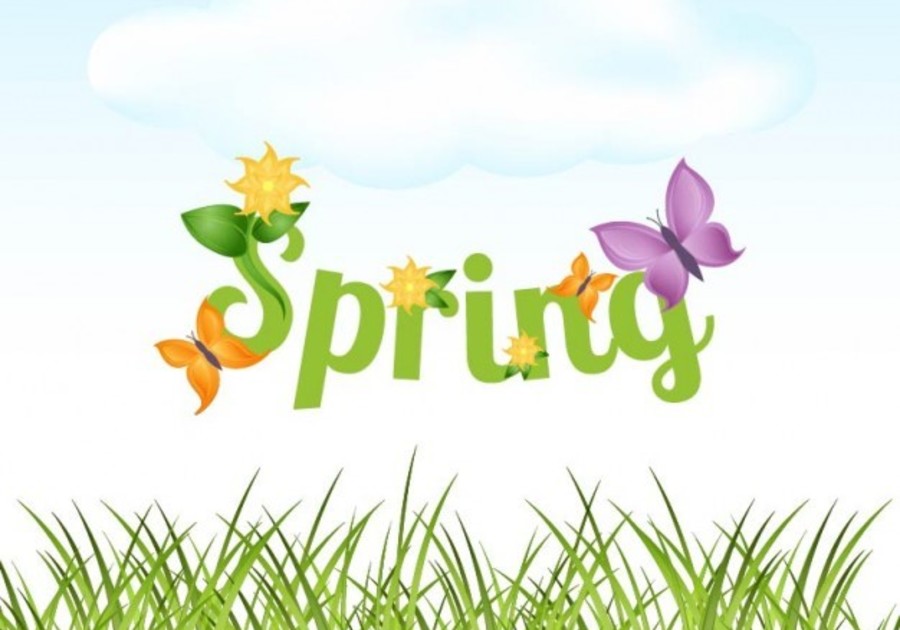Every season has its own wonderful uniqueness. Summer provides us with amazing produce and long days. Fall has cool nights and pumpkin patches, winter is cold and soups always hit the spot. Farmers markets start opening in spring and berries appear at grocery stores. I love making a Saturday morning trip to the Farmers Market with my family, it is a wonderful way to connect with the community and meet local farmers. It is so important for children to know we grow what we eat, and food from the earth is the best for nourishing their bodies. Here is a list of in-season, good for your body, Colorado produce along with some helpful facts and tips.
Asparagus: Did you know asparagus is a member of the lily family? It originated in the Mediterranean but now is found worldwide. Only 20 varieties of asparagus are edible, there are about 300 varieties known. Green and purple asparagus are trimmed when 6-8 inches tall, but white asparagus is undergrown to prevent chlorophyll development. Compared to other vegetables, asparagus is low in carbohydrates but rich in protein. A single cup of asparagus has 24 calories and asparagus is an excellent source of potassium, vitamin K, folic acid (great for expecting mothers). It is also an useful source of vitamin C, vitamin A, Riboflavin (B2), thiamin, B6, potassium, niacin, phosphorus, iron and fiber, like most vegetables. *Tip* store asparagus in your refrigerator in a vase, like flowers, it will last much longer!
Kale: Did you know kale and cabbage are related? They are both members of the cruciferous family. There are many varieties of kale such as dinosaur, curly, and ornamental. All are delicious and extremely nutritious. Curly kale was an important crop for the ancient Romans and was eaten by peasants throughout the middle ages. Kale came to the United States in 1600s and is now primarily grown in Delaware and Florida. Kale’s nutritional values exceeds the imagination! It is an excellent source of vitamin C and B6 and manganese (for healthy bones, metabolism, inflammation, etc.). It is a great source of fiber and other healthy minerals like copper, iron and calcium. It is also a good source of vitamins B1, riboflavin and E. *Tip* do not wash kale before refrigerating because it will make the greens limp. Always keep in a crisper for longer storage time.
Radish: Did you know radishes were so revered by Greeks, they carried them on golden platters as gifts for the Gods? Mexican artists in Oaxaca create carvings out of the vegetable for their annual La Noche de los Rabanos (the Night of the Radish) that recognizes their introduction to the country by Spanish colonists. Radishes are sometimes very mild or extremely pungent. This roost vegetable and their greens are an excellent source of vitamin C. Like kale, radish is also a member of the cruciferous family and they help to keep gallbladder, liver and digestion healthy. The Indian culture uses the root and greens as a diuretic, an expectorant and to aid stomach ailments. Topically, radish seeds, when emulsified can be applied to the face for clearer skin. *Tip* a great snack of fresh radish and nut-butter is delicious and help cut through the spiciness of the vegetable.
Spinach: Did you know medieval artists extracted pigment from spinach to use as paint or ink? China was the first country to cultivate it as a food source, about 2,000 years ago. Spinach grows very well in temperate climates and is one of the first crops available at local farms in the spring. This crisp and sometimes bitter green is in the same family (Goosefoot) as beets and chard. Spinach is extremely nutrient dense. It is a great source of vitamin K, carotene, vitamin C and folic acid. These nutrients feed the nervous, circulatory and digestive systems. In addition, spinach contains bone building nutrients calcium and magnesium which help keep growing bodies strong! *Tip* Spinach is best eaten fresh, it loses nutrients with each passing day after being picked.
Now that spring has arrived and we can come out of hibernation. Dust off your bike and go on a family ride. Take a walk after dinner before the sun sets. Encourage your children to take notice of how trees are blooming, flowers are popping up from the ground and the sounds of birds chirping in the sky. When you visit the farmers market, let your child choose something special from a local vendor. Work together to prepare a delicious recipe for your family. Cooking together helps create memories that last a lifetime, and sharing a nutritious meal feeds the soul.
Are there new spring recipes that my family will love? Yes!
(click photo for link to recipe)
Spinach Cannellini Bean Soup:
Fine Kale Salad:
Springtime Orzo Salad:
Spinach Banana Muffins:
Jodie Lindsay Popma is a mother of 2 boys and lives in Longmont. She is a Holistic Nutritionist, Nutritional Educator and School Food Advocate. She is on the board of Slow Food Boulder County and Health and Innovation Foundation. To learn more about Jodie visit www.smartfoodmadesimple.com. To find out more about local school food advocacy please join St Vrain Healthy Kids on Facebook.



